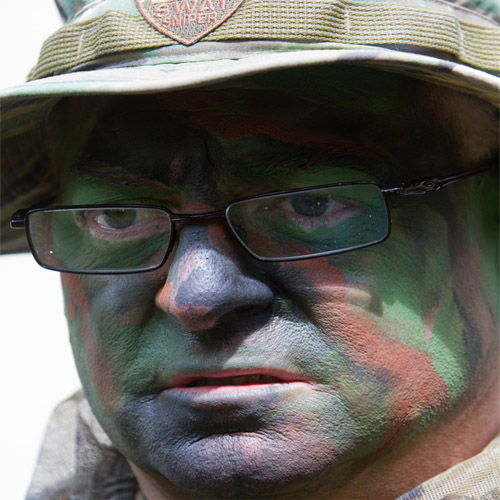For 6 years I was a Laboratory Technician in the Air Force Reserves, working all aspects of the laboratory as well as accomplishing "blood draws" (phlebotomy) in every imaginable setting (inpatient and outpatient). I have also worked in the private sector for hospitals, doctor offices, and clinical lab sites. This was my primary field for 20 total years (which began with the Air Force training). I've been in a new career for ten years, though I recall virtually all of my lab science.
Hi Juli, Most places have exact protocols in place based on their own laboratory's procedures, and those in turn would likely follow their region's or national guidelines. In general, though, a PICC Line (peripherally inserted central catheter or somtimes called a percutaneous indwelling central catheter) is virtually always in the realm of the nursing department, due to the sensitive nature of this line. As I recall, central lines, PICC Lines, and even blood drawn from I.V. sites (often as a last resort for extremely difficult draws) are all required to be flushed with saline and/or heparin (again, exact protocols are ususlly a function of the particular institution) prior to withdrawal of blood for analysis. That's something most phlebotomists are not allowed to do, only nursing personnel. Also, again, depending on the institution, there may be a waiting period. If the line has an active I.V., I've seen wait times as high as one hour and as low as fifteen minutes. And the wait time can apply to both the cessation (temporarily) of the I.V. AND the flushing with saline and/or heparin, so those wait times can double overall. After the wait period, the nurse usually swabs the port with iodine (and in some places with alcohol first) waits for it to dry, then withdraws the amount of blood required. He or she would then inject the sample into the blood culture bottle (after first having swabbed it with iodine {and in some places, alcohol first}) and invert the bottle a few times to mix well. Doctors most often order blood cultures as a series. For example, "Blood Cultures x3", and the time between each blood culture draw would depend on the institution as well, and even the doctor's preference (I've seen 20 minutes apart, 30 minutes apart, 1 hour apart, etc.) If you're looking for an exact protocol in preparation for an exam, I would respectfully suggest checking with your resources for a clear answer as an exact protocol may depend on that as well. Sorry I couldn't be more precise.
4. My answer for this question is contained in my answer to your first question.
5. You've likely hit a nerve such as the medial antebrachial cutaneous nerve. End the blood draw and try for the cephalic vein at the antecubital site.
6. Generally you should not wipe the site after using alcohol, you should let it air dry to avoid contaminating the site and potentially causing, though rare, phlebitis.
Hi Vacation12, Thanks for your question. I'm going to attempt to answer this in two parts: 1) The "hissing noise" and 2) The "bubble". Firstly, that hissing sound. I can say that in 20 years of drawing blood I have only heard a hissing sound maybe twice during a blood draw, and both times were in the hand of a patient. The needles are very small, and the skin in the hands of many patients are quite fragile, so it is possible that the bevel (the machined inner incline) of the needle simply began to slip above the skin. As the collection tubes are vacuum tubes, they would thus be sucking up air and not blood. That would have been the noise you heard. This is the most likely scenario. It is possible, but unlikely, that the needle's attachment to the syringe or tubing was defective or not tight enough but again, that's fairly unlikely. As for the "bubble", at the moment the needle began to slip out of the vein, blood would have infiltrated the surrounding subcutaneous tissue causing a hematoma, or small blood blister. This is why the phlebotomist put extra pressure on the site to avoid an expansion of the "bubble" and to wait for the blood to begin clotting. Usually we suggested ice and ibuprofen for pain and swelling if required. The bruising usually goes away in about a week and doesn't normally cause problems. But beyond a week, or if the pain is severe and not abating within 24 hours you'll probably want to check with your doctor.
Blood draws from babies are usually in very small amounts. As as a phlebotomist you know qualitatively that you shouldn't draw large amounts of blood from infants. Most institutes have their own guidelines. One protocol I've seen is (from drgreene.com):
"GUIDELINES FOR PEDIATRIC BLOOD DRAWS"
"...general rule of thumb I use as an outside limit for blood draws, because at these levels of blood loss there can be measurable health consequences. Blood draws in infants and children should not exceed 5% of their total blood volume in any 24 hour period, unless medically necessary. This is a generous upper limit. Ideally it should be less than 3% of the total blood volume, and where possible, micro-sampling techniques to reduce the amount further are preferred. Blood draws in infants and children should not exceed 10% of the total blood volume in any one-month period, unless medically necessary."
* * * * * * * * * * * * * * * * * *
Samir, most of the time I used microtainers for blood draws on infants, whether capillary or venipuncture. These are very small plastic tubes that are, I believe, 0.5 ml when full. Half of a milliliter or even a full milliliter is not much blood for an infant. And I seem to recall that the average total blood volume (TBV) for babies is around 350 ml.
So, in your question, (3) 5 ml tubes is 15 ml total. From my experience that's way more than you'd ever need from an infant, and about 4% of the average TBV. It's probably not approaching hypovolemic trouble, but still an unnecessary amount of blood for the usual testing requirements.
Hotel Travel Blog Active 2019
 What do you do if a guest is doing something illegal in a room?
What do you do if a guest is doing something illegal in a room?
Poet
SWAT Team Commander (Retired)
 How do you decide whether to try and kill a hostage taker?
How do you decide whether to try and kill a hostage taker?
This one had me wondering. Normally, if you've redirected "multiple times" and then blood begins flowing into the tube, it's a good thing (in general, but that presumes you've redirected only a few times and without significant trauma). If the "multiple" redirects were in fact quite numerous and/or traumatic, you'll likely risk having hemolysis in the tube (hemolysis is a central theme in most blood draws) and of course redirecting, if done wrong, can be very painful for the patient and can leave horrible scarring and even an extremely painful hematoma. Also, I'm taking an educated guess here, the reference in your question to "blood spurts" COULD mean that a phlebotomist redirected too deeply and has compromised an artery. Arterial blood in vitro is cherry red and very different from blood from a vein in appearance. Again, trying to cover all bases. And the risk for an arterial draw by a phlebotomist who is not certified for that procedure is a very nasty hematoma for your patient, or worse, depending on the patient's condition.
As a lab technician and phlebotomist, I was never involved with drug testing of hair samples. I recommend you call a local hospital lab and ask for the phone number of a reference lab that handles this type of testing and give them a call. Sorry I couldn't be more helpful.
Hi Samir, I'm going to base my answers to your various questions according to real-life experience and also to questions I may recall on any state, military, or local school exams that come to mind. Please note that, if these are questions you have in preparation for any exams or quizzes, you should check for answers in your resources as well, be they hardcover or online. But I don't mind sharing what I know, so...on to your first question.
You asked: "A patient is a difficult draw, so the phlebotomist uses the exact same site each time."
Ok, this is more complicated than it seems. Usually, this refers to an inpatient who may have I.V.'s or a shunt on one arm, leaving only one "good" arm to draw from. It CAN refer to an outpatient also though (less often in my experience) who is a dialysis patient, heroin user, or otherwise has only one arm that is useable for venipuncture. You write "Exact same site". If by that you mean the exact same tiny hole you had just tried but failed to withdraw from, that is not advisable. In addition to the pain this could cause the patient, you are risking hemolysis of the blood sample in the tube, which will likely invalidate glucose and electrolyte readings, just to name a few. You could also cause unnecessary scarring and while rare even local phlebitis. If absolutely necessary (i.e. no veins on the hand, or areas of the arm above or below the antecubital are available), you can use the same vein, but above or below the "exact same site". You will need to hold the previous draw first to make sure it has clotted enough to begin the second draw (3 to 5 full minutes). If that is not possible, I would check with the tech-in-charge about asking a respiratory tech for an arterial draw or a line-draw by a nurse (both methods, I emphasize, would require permission).
-OR-
 Login with Facebook
Login with Facebook (max 20 characters - letters, numbers, and underscores only. Note that your username is private, and you have the option to choose an alias when asking questions or hosting a Q&A.)
(A valid e-mail address is required. Your e-mail will not be shared with anyone.)
(min 5 characters)
By checking this box, you acknowledge that you have read and agree to Jobstr.com’s Terms and Privacy Policy.
-OR-
 Register with Facebook
Register with Facebook(Don't worry: you'll be able to choose an alias when asking questions or hosting a Q&A.)